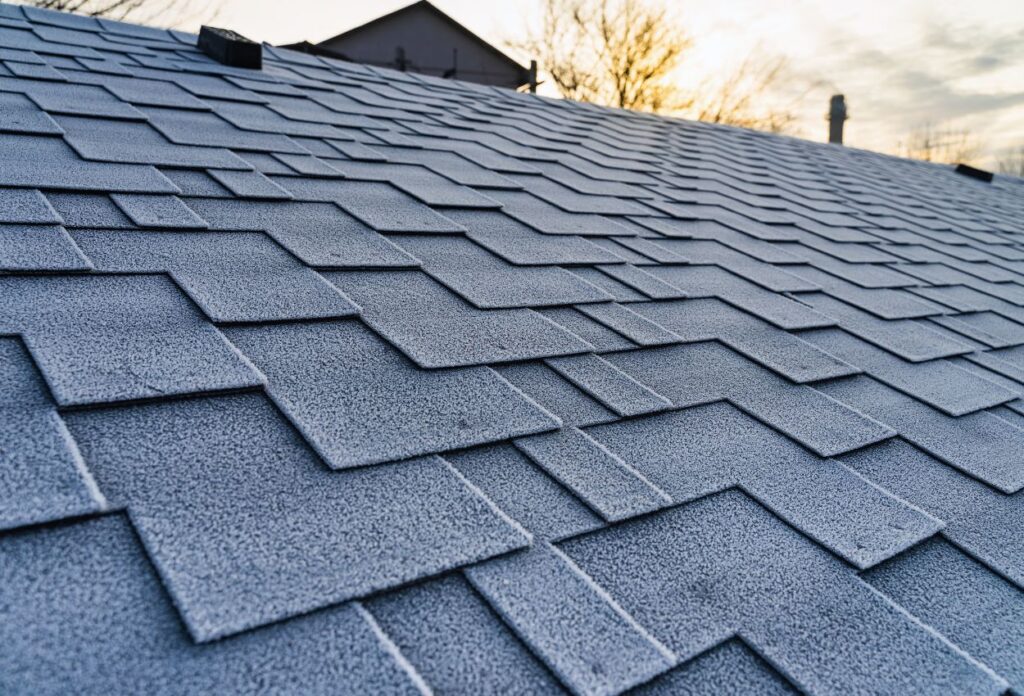From strong thunderstorms to tornadoes with speeds of over 200 mph, which can tear off roofs and cause significant damage, extreme weather is nothing new to Memphis. As a homeowner, you know that the roof is the first line of defense, but is yours strong enough to handle the test of extreme weather?
With tornado warnings being a regular occurrence in Memphis, investing in a tornado-resistant roof is crucial to protecting your home and family. Choosing the right roofing materials and designs for high-wind areas can make all the difference in keeping your property safe.
In this blog post, we will go over the best roofs for tornado protection, focusing on different materials and designs that Memphis homeowners can rely on.
How Does Choosing The Right Roof Design And Roofing Materials Influence Tornado Resistance?
Making the right roof design and material choices is essential for tornado protection since they improve the structural integrity of your house and reduce its susceptibility to wind-uplift and debris impact.
A thoughtfully engineered roof effectively distributes loads, helping to prevent collapse, while robust connections between the roof and walls add stability against extreme forces. Plus, proper installation and a focus on eliminating weak points further reduce the risk of damage, ultimately resulting in a safer and more resilient structure during severe storms.
Can A Tornado-Proof Roof Completely Prevent Damage?
A tornado-proof roof can greatly reduce damage, but it can’t guarantee complete protection. Tornadoes produce extreme forces, including high winds, flying debris, and strong suction, which can exceed even the toughest roof designs. Metal roofs, for example, are highly wind- and impact-resistant, but EF-5 tornadoes with winds over 200 mph can still cause failure. Plus, damage to walls or foundations can weaken the roof’s stability.
Best Roof Type For Tornado Protection
Below are some of the best roofing materials that can withstand strong winds and flying debris during tornado season:
#1. Metal Roofs

The first option, metal roofs, is a strong and reliable choice, especially in tornado-prone areas like Memphis. Its interlocking panel system provides high wind resistance, preventing wind uplift and keeping the roof intact during storms. Being lightweight, it reduces structural stress, making buildings more resilient in high winds. Also, metal roofs boast high impact resistance, often with a UL 2218 Class 4 rating, meaning they can endure flying debris without damage. With durability and efficiency, metal roofs are an excellent option for tornado protection.
#2. Impact-Resistant Shingles

For Memphis homeowners looking for an affordable yet durable roofing option, impact-resistant shingles offer excellent protection. Designed to withstand winds up to 130 mph, they provide better resistance against storms and hail compared to standard asphalt shingles. Their cost-effectiveness, ease of installation, and availability in various styles make them a practical and attractive choice for homes in Memphis.
#3. Concrete Tiles

Another good option known for their exceptional durability, concrete tiles can withstand winds up to 120 mph while allowing airflow to prevent wind uplift. Though heavier than other materials and requiring additional structural support, they provide a lifespan of up to 100 years. Environmentally friendly and customizable, concrete tiles offer a balance of longevity, strength, and aesthetic appeal, making them a solid choice for tornado resistance.
Best Roof Designs for Tornado Protection
Along with materials, the shape of your roof also impacts its tornado resistance. Here are designs that can improve wind resistance and reduce tornado damage:
#1. Low-Slope Roofs
Low-slope roofs are designed with maximum wind resistance, making them a great choice for larger buildings in Memphis. By reducing wind pressure on the structure, they lower the risk of storm damage. However, since heavy rain often accompanies tornadoes, proper drainage is essential to prevent water buildup. With the right design and materials, a low-slope roof can offer both strong wind resistance and excellent water protection.
#2. Reinforced Gable Roofs
Gable roofs can be more vulnerable to strong winds, but reinforcing them with hurricane clips and additional supports makes them much stronger. These reinforcements help prevent wind uplift, keeping the roof secure during storms. In Memphis, where tornadoes can strike with little warning, a well-reinforced gable roof offers a practical and effective way to improve a home’s resilience against high winds.
#3. Hip Roofs
Hip roofs are one of the best options for homes in Memphis due to their aerodynamic design. With four sloping sides, they help wind pass smoothly over the structure, reducing the risk of uplift and damage. This even distribution of wind force makes them highly durable in high-wind conditions. When securely fastened to the walls and built with strong materials, hip roofs significantly improve a home’s ability to withstand tornadoes.
#4. Multi-Slope Roofs
Unlike standard two-slope roofs, multi-slope roofs spread wind pressure evenly, reducing the risk of uplift and damage during strong storms. The extra slopes add stability by deflecting high-speed winds, making them a reliable choice for homes facing frequent tornadoes. This design boosts durability and enhances protection against extreme weather
How To Make A Roof More Tornado Resistant
Preparing your roof for tornado season starts with the right upgrades. Let’s go over the key features of a tornado-resistant roof:
1. Choose a Wind-Resistant Roof Design
Roofs with multiple slopes, like hip roofs, handle strong winds better than flat or gable roofs. Their aerodynamic shape reduces wind pressure. Keeping overhangs small also helps, as wide overhangs can catch the wind and increase uplift risks.
2. Strengthen Roof-to-Wall Connections
Securing the roof to the walls is key to preventing storm damage. Using hurricane straps or clips helps transfer wind forces from the roof down to the foundation, reducing the chances of the roof being torn off.
3. Reinforce Roof Sheathing
Stronger roof sheathing improves wind resistance. Using thicker wood panels, like 7/16-inch or 19/32-inch, and securing them with nails instead of staples makes the roof more durable. Adding a waterproof underlayment also helps protect the home from leaks if shingles or tiles get damaged.
4. Use Impact-Resistant Materials
Tornadoes can send debris flying, so impact-resistant roofing materials are essential. Look for materials with a UL 2218 Class 4 rating, which can withstand hail and debris without cracking or leaking. This helps prevent water damage and protects the roof’s structure.
5. Choose Lighter Roofing Materials
Lightweight materials like metal put less stress on the roof during high winds. They are strong, durable, and less likely to be lifted off compared to heavier materials like concrete tiles. This improves overall storm resistance.
Protect Your Home With Miller Roofing and Renovations!
At Miller Roofing and Renovations, we specialize in roof storm damage repair services, offering thorough inspections and fast, reliable solutions. With experience of handling Memphis’s severe weather, we know how to fix wind-torn shingles and major structural damage using high-quality materials and proven techniques. Our goal is not just to repair your roof but to reinforce it for better tornado resistance. Contact us today at (901) 457-9405 and protect your home from the next storm.
FAQ
When To Call Your Insurance Company For Roof Damage Caused by a Tornado?
After a tornado damages a roof, homeowners should contact their insurance company right away. Quick reporting helps speed up the claims process. Taking photos or videos before cleanup is important for documentation. If temporary repairs are needed, like covering holes with tarps, keeping receipts can help with reimbursement. But waiting too long to report damage could lead to claim issues or denied coverage if the damage worsens.



 FREE ESTIMATE
FREE ESTIMATE